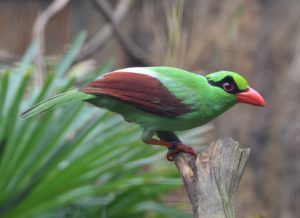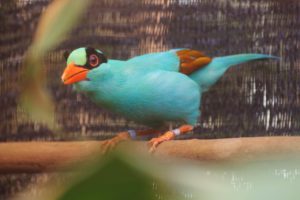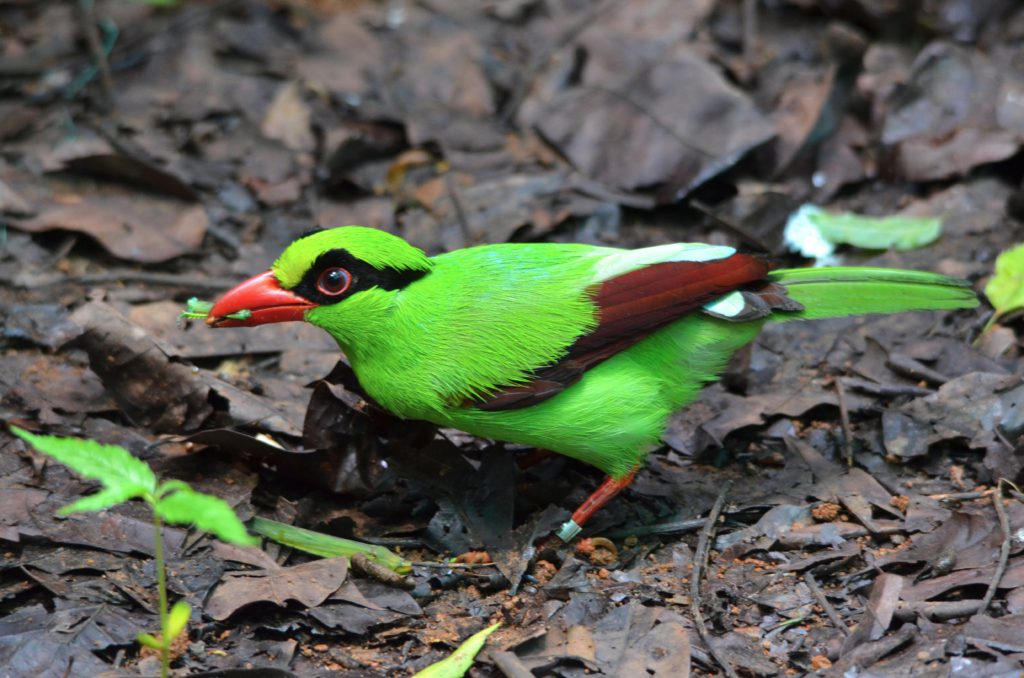Authors: Simon Bruslund (Heidelberg Zoo, Germany) and Andrew Owen (Chester Zoo, UK)
Did you know that Green Magpies fade from vivid green to a turquoise blue when they don’t receive the correct diet?
It has long been known that the plumage of Green Magpies of the genus Cissa fade in colour when they are kept in captivity and it has always been unclear if it causes the birds any ill effects.
Although often pondering about this problem, it was, as is often the case, a coincidence which provided at least part of the answer. In Weltvogelpark in Walsrode in 2009 a plant-based supplement was given to other birds for other reasons by Simon. However, the Common Green Magpies in the collection were also given part of the same food for practical reasons. The transformation from the blue hue we had become accustomed to, back to a brilliant green was quite a surprise.

It was Andrew who picked up on the notion that we might be on to something as he tried it out on a much larger scale with the team in Cikananga, Java who had just started the conservation-breeding programme for the critically endangered Javan Green Magpie.
Several of the birds rescued from the illegal wildlife trade, which formed the foundation for the breeding programme were a dull blue colour, indicating they had been kept in cages on a poor diet for some time, while other birds were bright green, suggesting they had only recently been caught from the wild.

Research indicated that the Green Magpies’ bright green plumage is achieved with the help of a yellow carotenoid pigment called lutein, which is found in many leafy green plants. Without lutein in their diet, Green Magpies fade to pale turquoise-blue – the structural colour of their feathers.
But Green Magpies don’t eat plants, they feed mostly on large insects, insects which we must assume eat lots of lutein-rich plants.
To help keep the birds green, a powdered and dried flower did the trick, a supplement made from the marigold flower was added to the diet of the insects, which form part of the Magpies diet (the insects were also fed lots of leafy greens). The combination of blue and yellow perfectly produces Cissa green.
We now know that the vivid green colours of the Green Magpies of the genus Cissa and some other green insect-eating birds are maintained with the addition of the pigment lutein. Without this, the birds’ vibrant plumage will fade. What we still do not know for sure is if these components also fulfill other functions for the bird, for example it is thought lutein may play an important role in the immune system. We now also believe that the pigment is so unstable, that the birds will also fade in bright sunlight. These birds naturally live in dark dense evergreen forests, where sunlight rarely penetrates to the forest floor.
The support given by EAZA institutions to the Silent Forest campaign helps us conserve these wonderful birds and in doing so, learn more about their biology.
We hope that sometime in the future, we will be able return the Javan Green Magpie to their mountain forest home.

